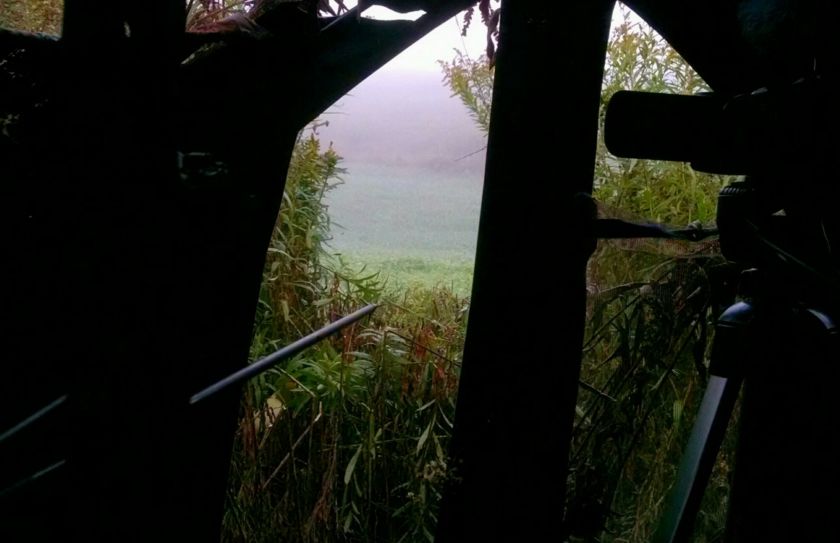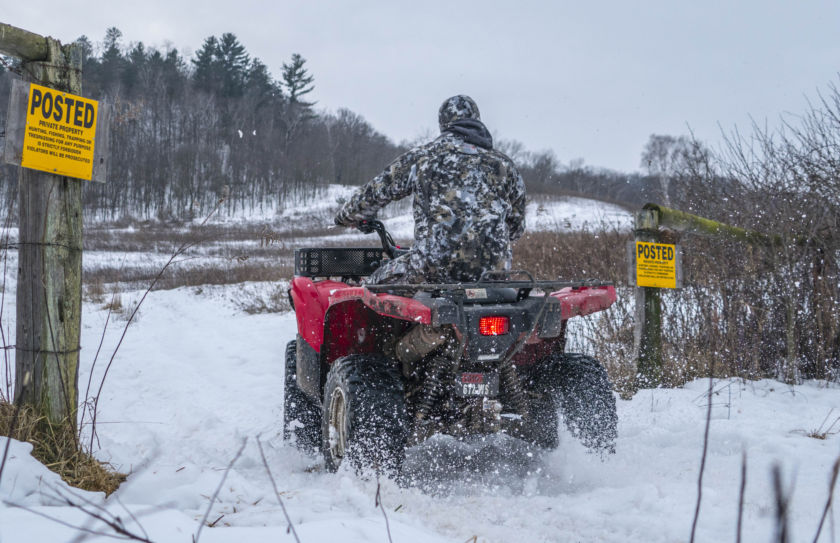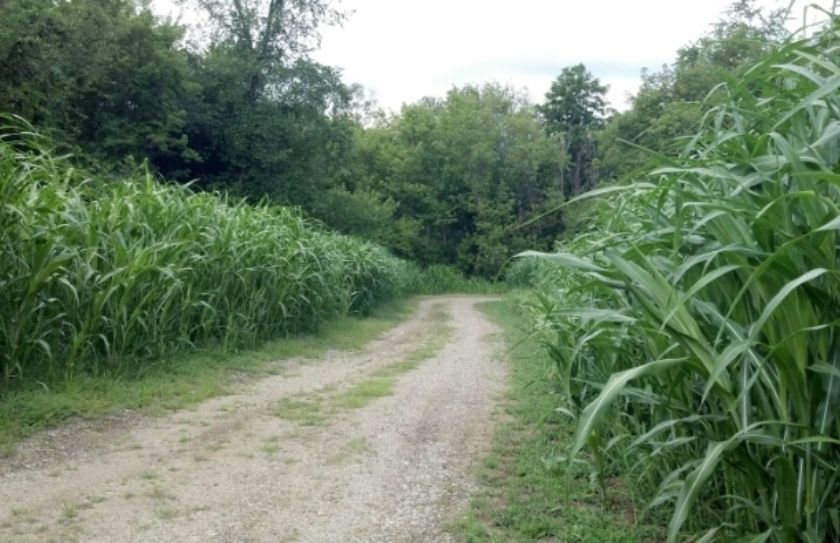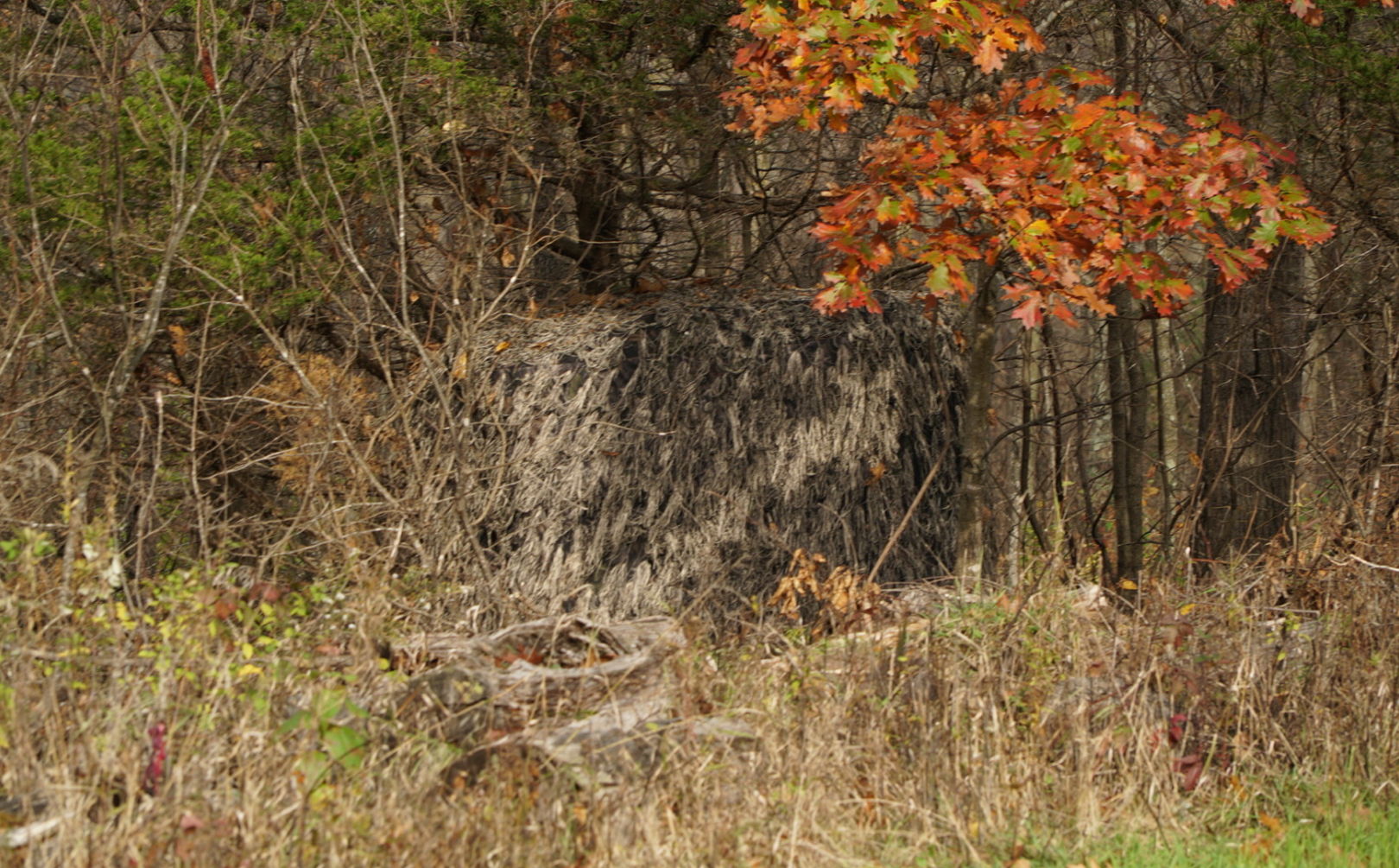
Access, access, access; but are you able to hide your deer blinds?
When it comes down to creating a successful hunt, there is no more important of a strategy than how you enter AND exit your stand locations. However, even a great access can be ruined if you fail to hide your deer blind. Do you hide your deer blind?
Have you ever fallen into the trap of placing a deer blind right in the middle of a food plot? One of the most common phrase that I share with my clients is, "If you can't get in and out of your blind location without spooking the deer that may be feeding in the food plot you are watching, then the blind has got to be moved."
*With a Bowhunting Blind, your blind needs to blend in at a much, much closer distance than merely 100 yards. There is so little room for error!
Passing The 100 Yard Deer Blind Test
A gun blind should always pass the 100 yard test. Meaning? That if you can still see your gun blind from 100 yards away, it probably isn't hidden enough. With a bowhunting blind, your blind needs to blend in at a much, much closer distance. There is so little room for error. By defining deer movement, blocking your downwind, using a well concealed blind and maintaining a deerless access route, you can create outstanding archery setups without spooking deer out of the area.
The priority of the 100 yard test is sometimes lost because some of the hunting TV shows can be extremely misleading; even some if the ones that I personally like the most. Why? Because XYZ hunter walks into a deer blind in the middle of the day, and promptly shoots XYZ monster booner buck about an hour before dark. The hunt was fair chase and was a culmination of often years of hard work, but there are often a few missing details. What they often do not tell the viewer is that the particular deer blind that they hunted out of, is just one of dozens of blinds scattered around potentially thousands of acres and numerous parcels, that are hunted 3 times a season or less. Although does and fawns can tolerate a high degree of herd and hunter stress, a mature buck can not. And as a mature buck ages, in my experience he tolerates an ever decreasing level of herd and hunting stress. TV shows, doe family groups and young bucks offer the illusion that unhidden blinds don't matter when it comes to the consistent harvest of mature bucks, but in my experience that illusion is far from reality.
I live by the rule that if I can't get into an out of a deer blind without spooking the deer I will be watching, than the blind has got to be moved or removed, with no exception.
One poorly hidden blind can destroy a parcel of few hundred acres or less for 3-4 weeks or more at a time, with only 1-2 hunting intrusions. If you have the luxury of multiple parcels of lands, dozens of deer blinds and thousands of acres, than this article may not be for you. However, if you are like me and it is best for you to get in and out of your deer blind as undetected as a special forces sniper, than there may be no better way to do so than by building a berm or solid wall of screening growth.
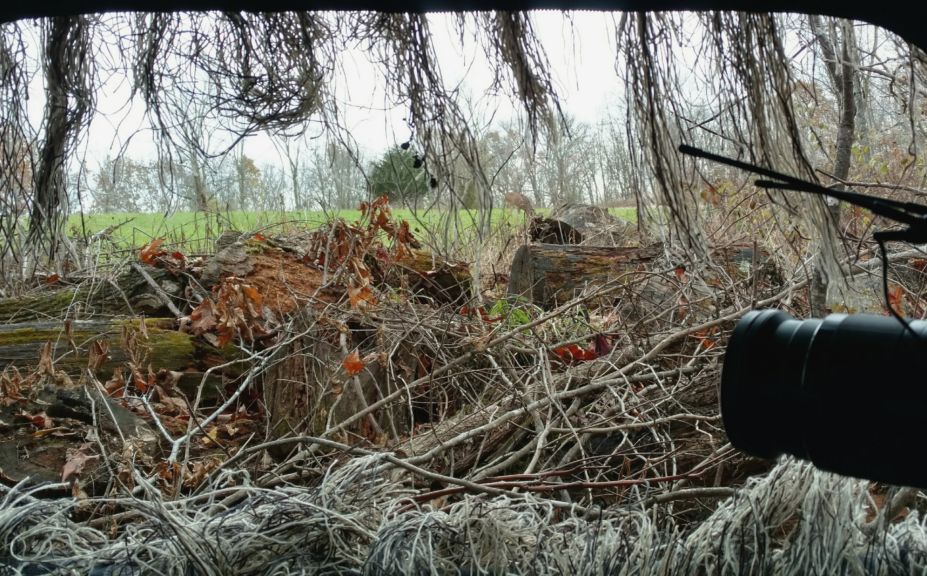
*Using an effective screen to get in and out of a deer blind without spooking deer is only part of the equation, so for a full set of strategies for hunting a food plot without spooking deer, try reading "8 Critical Kill Plot Strategies For Whitetails".
Top Ways to Hide Your Deer Blinds
It's always best to blend into the habitat within your hunting grounds like a stealthy predator. Building a 10' high berm several hundred yards long parallel to a road or neighboring field may be the ultimate way to keep your deer/human encounters to an absolute minimum, but building a berm certainly isn't for everyone! In no particular order, here are a few of my favorite habitat ceations to keep your hunting efforts hidden from the local deer herd:
1. Earthen Berm
2. Switchgrass Strips
3. Egyptian Wheat Plantings
4. Conifer Walls (in particular Spruce or Red Cedar)
5. Non-Deer Food Shrub Borders
6. Elevation Changes
7. Sorghum Sudan Grass
8. Brush Piles
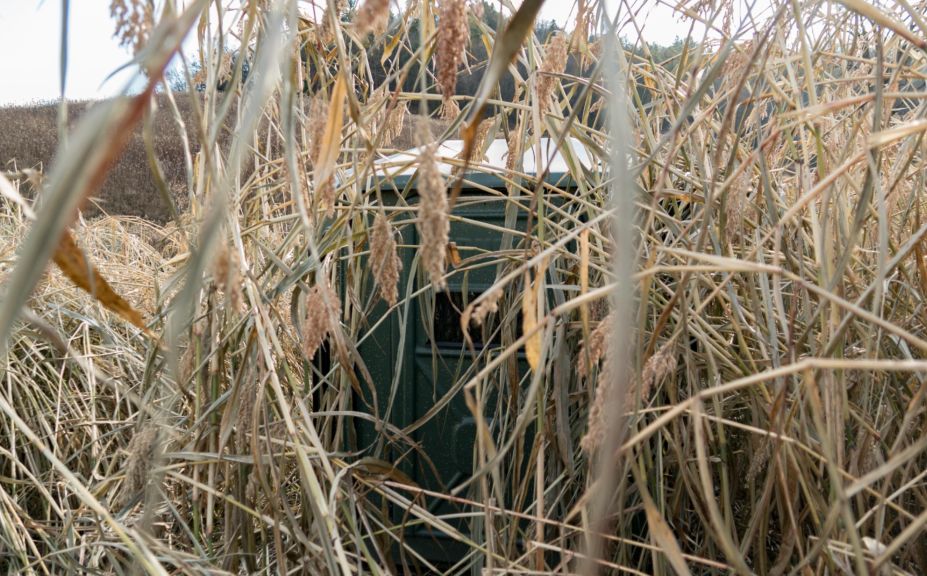
*Would you like your blinds to be this hidden? I have relied on Northwoods Whitetails Food Plot Screen for the past 5 seasons!
Probably my personal favorite option has been accessing deer blinds that have been completely hidden within a wall of Spruce. My son Jake and I had an incredible sit in 2006 when we snuck into a White Spruce and Balsam Fir hidey hole to watch an afternoon bedding to food source movement with 3' of snow on the ground. We had a doe, fawn and small 4 point walk within 5' of where we were nestled into a hidden snow and conifer deer blind and I can still remember how wide Jake's eyes were within the layers of facemasks. At only 4 years old, Jake realized the need to remain completely hidden!
Regardless of how you attempt to hide your deer blinds, I encourage you to match the habitat as best as possible. Even a berm can be planted with various grasses, trees and shrubs to help to "blend" the improvement into the landscape. The one thing that I do not recommend, is any deer blind hiding habitat type that offers a portion of food, including corn or browse producing shrubs and trees. Why? Because you never want to invite deer to feed on your deer screen, let alone whatever type of habitat is hiding your deer blind.
*Although a berm may offer the easiest way to hide your deer blind while accessing the edge of a food plot without being detected, it is not practical for many hunters. Check out the YouTube clip above or try reading, "Egyptian Wheat Screening For Food Plots" for a much cheaper and more practical way to hide your deer blinds.
Using a Berm To Hide Your Deer Blinds
Whether you use a berm to hide you while you access your deer blinds, or to actually hide a deer blind within, a berm can offer a permantly effective way to hide your hunting efforts from deer. One of my favorite berm creations includes the deer blind itself. Accessing the backside of a deer blind with dozens of deer feeding in front of your blind, and not spooking them, is an incredibly effective tactic! By using a little paint and even taking advantage of some weedy growth within the berm, you can effectively keep deer from seeing your blind let alone ever knowing that they are actually being hunted. There is nothing better to me than sitting in a tree stand 20' high, and being able to be a part of the sites, sounds and smells of the wildlife and habitat. When the temperatures turn nasty and the weather is extreme, a hidden box blind can be a welcome location to seek refuge in so that you can enjoy watching deer while remaining completely undetected; but that blind has got to be hidden.
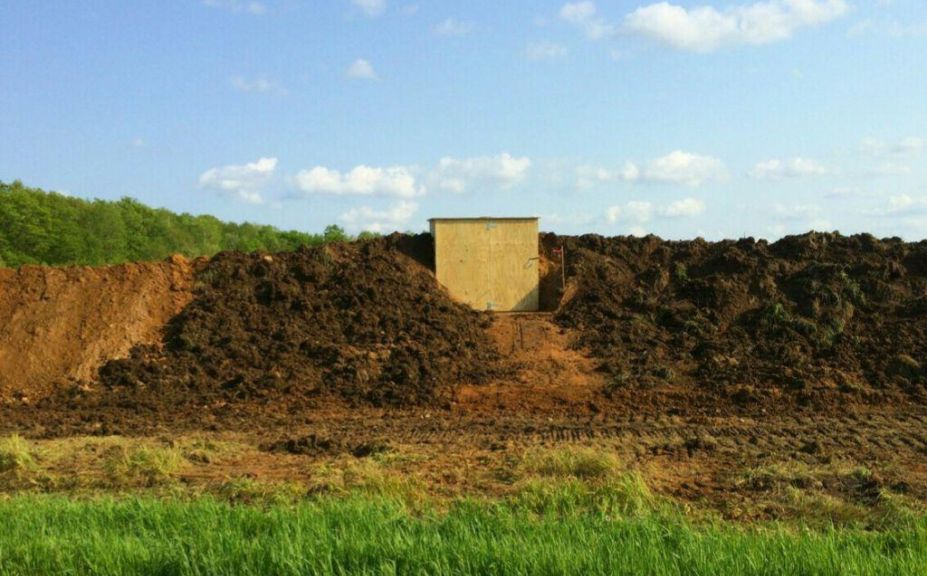
*However you get it done, a chunk of hunting ground will never reach it's potential unless you keep the deer that you are hunting, from actually knowing they are being hunted. Using effect access and deer blind hiding techniques is only a part of the puzzle for increasing the daytime mature buck movements on your land, but for the full set of strategies make sure to read, "The Myth of Nocturnal Bucks".
Conclusion
Is a berm the best way on your land to hide your deer blinds? Maybe...maybe not. Like I said, I have really have enjoyed using conifer. Keeping the local deer herd from knowing that they are being hunted on your land is so critical, that a berm may just be your best option. How hidden are your own deer blinds and stand locations? Whether you use dirt, grass, weeds or woody growth if you can enter a blind without being detected, you have accomplished an incredibly important feat that is often undervalued and overlooked.
